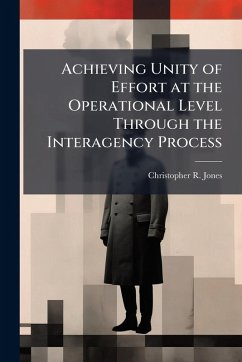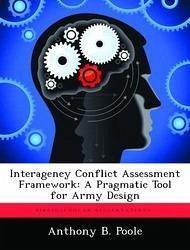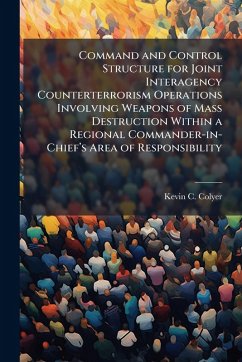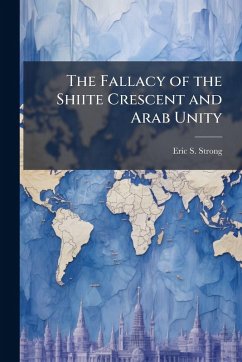
Improving Interagency Coordination and Unity of Effort
An Organizational Analysis of the Contemporary Provincial Reconstruction Team
Versandkostenfrei!
Versandfertig in über 4 Wochen
15,99 €
inkl. MwSt.

PAYBACK Punkte
8 °P sammeln!
This research seeks to answer one primary research question: What organizational and institutional factors are hindering effective interagency coordination and unity of effort within the contemporary Provincial Reconstruction Team (PRT)? To answer this question, this research conducts a comparative analysis between two case studies; a current operational-level PRT and a PRT-equivalent organization that operated during Vietnam. It logically focuses and justifies analytical results based upon sound measures of effectiveness drawn from Mary Jo Hatch's Organization Theory. These measures of effect...
This research seeks to answer one primary research question: What organizational and institutional factors are hindering effective interagency coordination and unity of effort within the contemporary Provincial Reconstruction Team (PRT)? To answer this question, this research conducts a comparative analysis between two case studies; a current operational-level PRT and a PRT-equivalent organization that operated during Vietnam. It logically focuses and justifies analytical results based upon sound measures of effectiveness drawn from Mary Jo Hatch's Organization Theory. These measures of effectiveness focus on Hatch's organizational core concepts of environment, social structure, technology, culture, and physical structure. Applying these measures of effectiveness along with the application of the three perspectives of modernism, symbolic-interpretivism and postmodernism enables a complete examination of the contemporary and historical PRT organizations, identifying those factors that inhibit or promote effective interagency coordination and unity of effort. This research demonstrates that while hierarchical control is certainly a critical organizational factor driving interagency coordination and unity of effort within the PRT, it is not the only factor. Analyzing both cases studies, this research reveals that other factors such as a favorable security environment, cross-cultural functional teaming, charismatic leadership that embraces cultural differences in pursuit of a PRT-wide identity, integrative technologies, and physical structure are also essential to producing a cohesive and optimal PRT system that maximizes interagency coordination and unity of effort. Finally, this research shows that there is a pressing need for interagency doctrine that drives institutional interagency training and leadership programs. This work has been selected by scholars as being culturally important, and is part of the knowledge base of civilization as we know it. This work was reproduced from the original artifact, and remains as true to the original work as possible. Therefore, you will see the original copyright references, library stamps (as most of these works have been housed in our most important libraries around the world), and other notations in the work. This work is in the public domain in the United States of America, and possibly other nations. Within the United States, you may freely copy and distribute this work, as no entity (individual or corporate) has a copyright on the body of the work. As a reproduction of a historical artifact, this work may contain missing or blurred pages, poor pictures, errant marks, etc. Scholars believe, and we concur, that this work is important enough to be preserved, reproduced, and made generally available to the public. We appreciate your support of the preservation process, and thank you for being an important part of keeping this knowledge alive and relevant.












